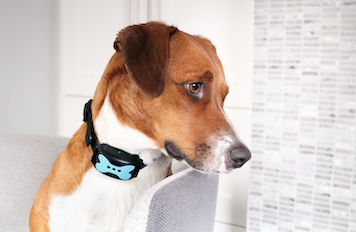As spring is upon us, I am reminded that May is mental health awareness month. When I think about mental health, I think about everything dogs do to improve human mental health. So, what about dogs and their mental health? What can we do to protect their brain health? Watching a dog’s mental health is at the forefront of my practice and training programs when we treat problem behaviors.
Eliminate or avoid regular stressors
The first thing I consider is whether a dog has regular stressful events that occur. I identify whether the dog shows signs of stress or is regularly becoming reactive or aggressive. If so, I eliminate those triggers in the short term, if not entirely. You might ask yourself, am I regularly exposing my dog to triggers? Are those exposures helpful or harmful? Are they necessary?

Typical examples of stressful events might include:
- The use of shock in training
- Restraining a fearful dog so that young children can pet them
- Free access to a window where your dog spends all day barking at passersby
- An owner unintentionally or intentionally does something that elicits fear or aggression, sometimes as a form of entertainment.
As a CAAB, I treat what is within the scope of the training program and then manage the others. I focus on what will improve the quality of life for dogs and their owners. For example, a dog that is reactive to other dogs will need treatment for reactivity and access to dogs passing by the home is temporarily blocked. In other cases, owners might need more education on a particular topic, like the effects of shock in some scenarios or body language they could observe in their dogs during seemingly stressful events. The goal is not to eliminate stress in your dog’s life completely. Instead, it is to reduce unnecessary stress as much as possible and eliminate daily, recurrent stressors. By avoiding chronic stress for your dog, you help protect their mental health.

Joyful social interactions
One of the following things I consider is how much social interaction a dog gets. Being left alone for long periods is a necessary evil for most dogs. Owners’ obligations pull them away from home—it is simply life! When owners are home, are there positive interactions between dogs and humans? Do they seek each other out? Does the family dog seek interactions from children in the home, and if age appropriate, can the children be incorporated into social interactions with dogs? I know my children positively contribute significantly to my dogs’ social joy. In my opinion, dogs must experience joyful—big-open-mouth, wiggly-type lively– social interactions daily. Cuddling on the couch or getting a pet when you walk in the door is appropriate but insufficient. The interaction should be active, fun, and social. Who knows, the activity might boost your brain health too!
Ways to combat boredom
The social interaction of active fun also helps to combat boredom—one-half of the final area I consider when looking to improve a dog’s mental health. Again, sometimes boredom is inevitable and not always a terrible thing. But if your dog is alone for long periods or inactive most of the day, it might be time to consider ways to combat boredom. We’ve all heard of food-stuffed toys to combat boredom; you can step it up a notch and have your dog’s meals used for entertainment. Moisten the food with water or broth, stuff the Kong, and put it in the freezer overnight. This is a low-effort way to fill sometime during the day and decrease boredom. Evaluate your dog’s activity level and get creative on filling time while you are away or busy.
Somewhat conversely, it is important that your dog’s environment is predictable. The constant change in their environment can induce stress, particularly for an adult dog. Aside from daily and social changing from one day to the next, it is important that their routines stay generally consistent. Sometimes travel or moving is unavoidable and can induce some level of stress. Aim to create a home where your dog knows what is expected of them and how to meet those expectations. This helps create predictability for your 4-legged family member even when your schedule is chaotic.

You can protect your dog’s brain health by focusing on eliminating or avoiding regular stressors, making room for joyful social interactions, and striving to create an entertaining and predictable environment. Good brain health leads to good mental health and a long, happy, healthy life with your 4-legged family member extending well beyond May!




